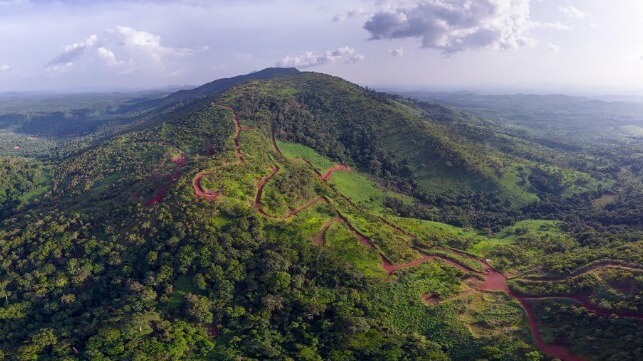Bulkers to Get Boost From Guinea's Vast Simandou Iron Ore Mine
Africa's biggest mine project will ship about 120 million tonnes of ore a year

Rio Tinto and its Chinese partners have secured all regulatory approvals to move ahead with the massive Simandou iron ore mine and railroad project, the "largest greenfield integrated mine and infrastructure investment in Africa." First production will begin as early as next year.
The Simandou range is a hilly area of central Guinea, and it contains the largest new source of high-grade iron ore left in the world. The size of the resource is estimated at about two billion tonnes, enough to last for 40 years of extraction.
The project is a complex partnership between interests in Asia, Europe and Africa. Rio Tinto owns 53 percent of the holding company Simfer, which owns two iron ore mine leases in the Simandou range. Simfer's other shareholders are Chinese and Guinean.
A Chinese-Singaporean consortium, WCS, owns two adjacent leases in the Simandou range (with additional Chinese and local partners). These leases will be developed independently, without Rio Tinto's involvement.
All of these entities are working together to build a new railroad to carry their iron ore 400 miles overland to the coast, along with a new loading port to the southeast of Conakry. Simfer and WCS will own 42.5 percent of these infrastructure assets each, with the balance held by the Guinean government. The responsibilities are split: WCS is building the main rail line and a barge port, and Simfer is building a transshipment vessel port and a spur line. Taken all together, the cost will come to about $6.2 billion.
Rio Tinto believes that the project will generate thousands of local jobs, transform the transport infrastructure for the nation's inland provinces, and provide a new source of high grade ore for decarbonizing the iron and steel industry. (Because of the ore's high purity, it will require less carbon to smelt.) The project will also create billions of tonne-miles of new demand per year for bulkers, which will be needed to deliver the ore to steel mills in China.
This is Rio Tinto's second attempt at a development plan for Simandou. The first attempt was shelved in 2016 amidst a global slump in iron ore prices, which left the project financially unviable until market conditions improved.
